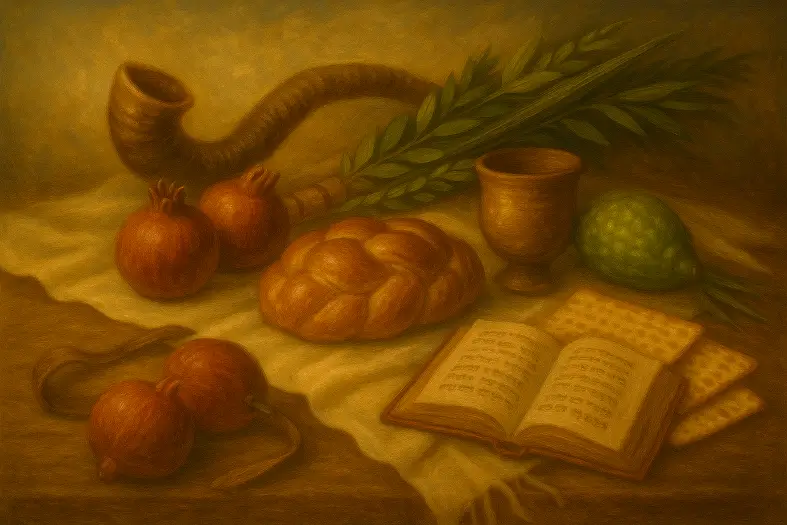


After eating bread to satisfaction, one must bless Hashem with Birkat HaMazon, acknowledging Him as the source of sustenance and the gift of the Land of Israel.
This mitzvah is the Torah’s command to recite Birkat HaMazon, the Grace after Meals. Unlike most blessings, which are rabbinic in origin, Birkat HaMazon is a direct biblical obligation whenever one eats bread and is satisfied. The Torah frames it as gratitude not only for food but specifically “for the good land” — linking nourishment to the covenantal promise of Eretz Yisrael.
The Talmud (Berachot 48b) teaches that Moshe instituted the first blessing (for sustenance), Yehoshua added the second (for the Land of Israel), David and Shlomo composed the third (for Jerusalem and the Temple), and the Sages of Yavneh added the fourth (for Hashem’s goodness even in exile). Rambam codifies that even if one ate only a kezayit (olive’s volume), one is rabbinically obligated, but from the Torah the mitzvah is fulfilled only when eating to satisfaction. Sefer HaChinuch emphasizes that Birkat HaMazon instills humility and constant recognition that prosperity comes from Hashem.
Commentary & Classical Explanation
Contrast with Mitzvah 84 (To have Tzitzit on four-cornered garments)
Parallel with Mitzvah 82 (To write a Sefer Torah)
The Talmud (Berachot 48b) lays out clearly who instituted each blessing and why:
Meaning of the Structure
Together, the four blessings trace the arc of Jewish life: food → land → spiritual center → survival and hope.
Later Additions and Why
Over the centuries, rabbinic additions were woven into the text:
What It All Means
Mindful Gratitude
National Consciousness
Spiritual Discipline
Communal Identity
Hope and Redemption


Represents Emunah—the deep, inner trust in Hashem’s presence, oneness, and constant involvement in our lives. This badge symbolizes a heartfelt connection to G-d, rooted in belief even when we cannot see. It is the emotional and spiritual core of many mitzvot.
Represents the concept of spiritual intentionality, purity, and sanctity—set apart for a higher purpose.
Mitzvot that strengthen communal life — showing up, participating, supporting, and belonging. Community is where holiness is shared, prayers are multiplied, and responsibility becomes collective.
Mitzvot that define and deepen the relationship between a person and their Creator. These include commandments involving belief, prayer, Shabbat, festivals, sacrifices, and personal holiness — expressions of devotion rooted in divine connection.
Mitzvot that govern ethical behavior, kindness, justice, and responsibility in human relationships. These actions build trust, dignity, and peace between people.
Reflects mitzvot rooted in love—of G‑d, others, and the world we are entrusted to uplift.
Signifies awe and reverence toward Hashem—living with awareness of His greatness and presence.

Dive into mitzvot, prayer, and Torah study—each section curated to help you learn, reflect, and live with intention. New insights are added regularly, creating an evolving space for spiritual growth.

Explore the 613 mitzvot and uncover the meaning behind each one. Discover practical ways to integrate them into your daily life with insights, sources, and guided reflection.

Learn the structure, depth, and spiritual intent behind Jewish prayer. Dive into morning blessings, Shema, Amidah, and more—with tools to enrich your daily connection.

Each week’s parsha offers timeless wisdom and modern relevance. Explore summaries, key themes, and mitzvah connections to deepen your understanding of the Torah cycle.